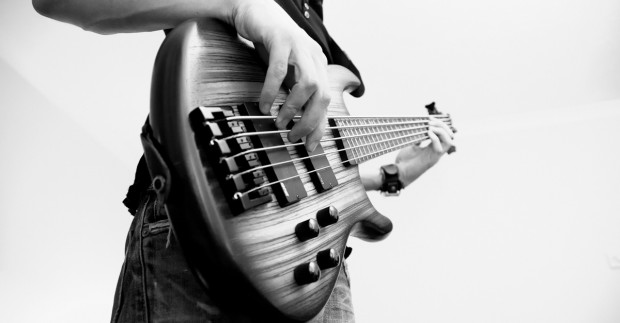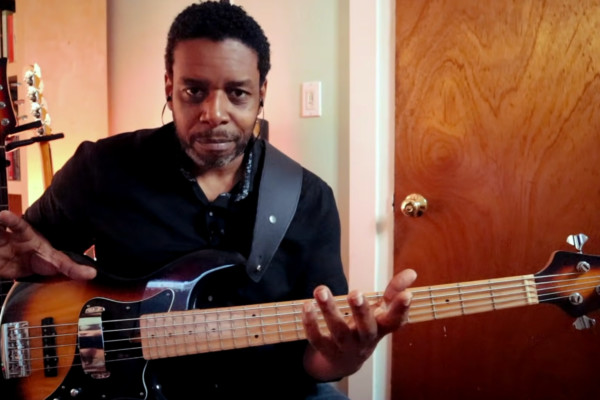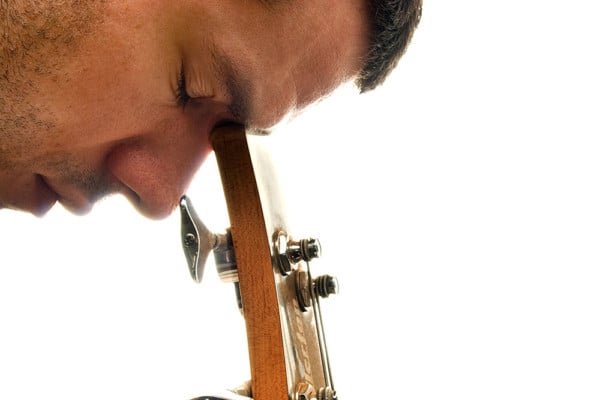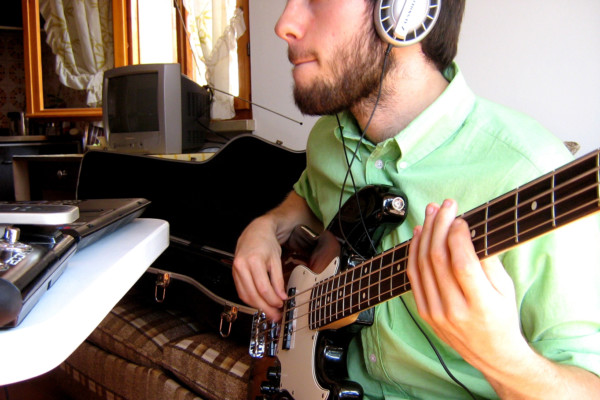Making Practice Meaningful

Q: I have a shelf full of instructional books, methods, transcriptions, etc., but I feel like they don’t actually help at all. I just play through things and while I feel like I practiced, I don’t really see how any of that stuff is helping. Any thoughts?
A: I know exactly how you feel. It took me a long time to learn that it wasn’t necessarily how long I practiced, or how difficult a thing I was reading, it was about how I worked on and processed that information that mattered.
While reading any notation is good for your sight-reading chops, that doesn’t mean that you are internalizing what the lesson has to offer. My biggest mistake was running too quickly through material. This is especially true for those of us that can sight read well and just blast through a lot of notes, flip page after page, and not really get anything out of it beyond muscle memory and reading chops.
Concepts take a more thoughtful approach when working through them. If you are trying to learn something that expands your musicality, understanding of harmony, chord scales, conceptual exercises, etc.. This stuff demands that you spend some quality time experimenting, deconstructing, reconstructing and digging before it can have a noticeable affect on your playing and approach to music.
Here are a few examples of things I practice and how I try and make the time spent meaningful:
1. Various bass styles or genres
I have quite a few books on Latin bass styles as well as slap bass books, walking bass books, and so on… In order to get something beyond just improving our ability to read notation and play with the appropriate feel, we need to really look at what information the author is trying to impart. If it’s rhythmic, you might isolate the various rhythmic patterns (one by one, if there are multiple rhythmic ostinatos in a written piece) and first work on internalizing the feel of the rhythm with the drums.
Then you might ignore the notation and only look at the chord symbols, playing that rhythm but choosing your own notes. If it doesn’t sound right, try looking at the harmonic approach and then analyze that and do the same thing, over and over again until you can read the notation OR only look at the chord symbols and sound convincing. If there are no chord symbols given (a pet peeve of mine), try and figure out the chords yourself and write them in (you can always ask a piano or guitar playing buddy to help, if you’re unsure).
2. Instructional method books
Step 1: Actually read what the author wrote in the beginning pages of the book. They start wth words (as opposed to notes) for a reason, and quite likely, they are trying to give you insight into how to approach the book in a useful way.
Step 2: Take your time and start at the beginning. There is a temptation to flip through until you find something that looks interesting or isn’t “too easy”. In my experience, there is no such thing as “too easy” and most students of mine greatly over-estimate their abilities. I can usually trip up pretty good players with the major scale if I make them play it in certain ways (often showing weaknesses in their fretboard awareness). Don’t take it for granted that you already have “X” under your belt. Take the time to start from the beginning, build that strong foundation before you charge ahead. You can’t build a great building on a weak foundation. The same is true for music.
Step 3: Once you feel like you’ve got a concept or approach down from the book, change the parameters in a way which forces you to recreate the approach on your own. Whether it’s simply ignoring the written notes and only looking at chord changes, closing your eyes and visualizing the fretboard, calling out notes while you play, using a different shape to play the same thing, etc… It doesn’t matter, just challenge yourself in some creative way to demonstrate an understanding of what it is you are working on.
3. Transcribing
Transcribing and learning things by ear is great for your ears and reading (if you write them down) but how do you get any better by learning how to play that line from that tune?
Again, you need to try and recreate the experience. If it’s a lick, set up some different chord changes and try to use the lick in the appropriate spot. Try using the lick against it’s relative major or minor (i.e.: if it’s a major lick, play the lick in C major over an A minor chord). If it’s a solo, take a look at the notes that they are playing against the chord changes and try to see the line through the players eyes. What was he/she thinking or going for when they played that thing. Look for chord tones, scale tones, target notes, chromaticisms, etc. Set yourself up with some chord changes and try to play in that style for 20 minutes. Record yourself. Try and figure out what works and what doesn’t and figure out why. Do it again. Do it again. Do it again.
Try and play everything you know with different fingerings. Try and play everything from an exercise in a book on every part of the fretboard (every position). Don’t ever let yourself think that you’ve “got it” because you read through it once without a goof. Dig as deep as you can and get creative!
Have a question for Damian Erskine? Send it to [email protected]. Check out Damian’s instructional books, Right Hand Drive and The Improviser’s Path.




Assuming one knows how to read music, you can get by for years with two books: 1) Rufus Reid’s Evolving Bassist and 2) The Bach cello suites. The only thing I would add is daily scale and arpeggio practice. I made out a 7-day schedule that goes through all the keys. One example would be to practice “name” scales a half-step apart – for example practice E-major and F-minor. It’s a good challenge for the ears and the fingers.
Amen to that. Two of my favorite books!
I also like Marc Johnson’s, “Concepts for Bass Soloing” and Oscar Stagnaro’s, “Latin Bass Book”.
Important article. Thanks! Something I’m working on (again) lately is playing diatonic seventh chords and inversions in every key for major, melodic minor and harmonic minor scales. The way I make this practice meaningful is to simply notice what sounds, patterns, movements are pleasing to me. I notice what give me a strong emotional reaction, and what is more neutral-seeming. I believe my playing becomes connected to my inner life in this way.